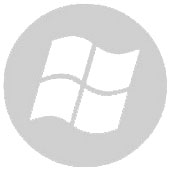Changes:
- Support multiple RoCE modes (RoCE v1+v2) on the same port: RoCE mode is per connection now.
- Added a new QP command “INIT2RTS_QP” to enhance QP connection readiness time.
- Disabled FCS checks to support switches that replace FCS with Timestamp.
- Added RX Port identification for direct route packets.
- Improved RDMA WRITE/SEND performance with retransmissions.
- Enabled firmware burning/querying using the PRM ACCESS_REG command.
- Enabled bad cable EEPROM reporting to the driver.
- Added support for Platform Level Data Model (PLDM) sideband protocol.
- Added support for priority based A0-DMFS mode (For further information, please refer to the PRM).
- Added support for Unicast/Multicast loopback disablement by the driver. (For further information, please refer to the PRM)
- Removed the source IP from the hash calculation (For further information, please refer to the PRM)
- Added support for Inline Receive mode up to 2KB.
Fixes:
- Packet Ethertype Fixed a mistakenly dropped ETH packet with ether type 0x600 by the NIC.
- Fixed a case preventing broadcast traffic from arriving to their destination after detaching high priority broadcast rule on a port where NC-SI was enabled.
- Fixed a failure to update RSS QP in steering rules.
- Fixed an issue where the port raised as SDR vs. InfiniScale IV QDR Switch
- Fixed a failure to read cable parameter which caused link failure on 40GbE dual port OCP devices.
- Fixed a rare case of completion Error with Bad Opcode sequence status which occurred when retransmitting read requests.
- Fixed a case where the actual bandwidth did not match the user settings in VM QoS.
- Fixed a case where on rare cases, communication to BMC was lost during driver initialization.
- Fixed a wrong LED behavior when the driver is disabled in the following adapter cards: MCX346A-BCQN, MCX345ABCQN.
- Fixed an issue with cable reading, which caused the link not to raise
- Set the maximum EQN number to 1024.
- Fixed a rare issue with VPD init flow which caused read failures.
- Fixed an issue with RX size counter not being reported.
About Network Interface Cards:
Windows platforms generally apply a generic driver that allows motherboards to recognize the Ethernet component.
However, in order to make use of all network card (adapter) features, you must install a proper LAN driver that enables the hardware. This task enables systems to connect to a network, as well as collect all component characteristics such as manufacturer and chipset.
If you intend to update the driver version, know that this process can add support for new OSes, fix different compatibility problems, resolve related errors encountered during the product’s lifetime, as well as include various other changes.
When it comes to the actual installation procedure, we should note that most producers try to make it as easy as possible, so following the steps should be a breeze: just get the downloadable package, run the setup, and follow the on-screen instructions.
There is a chance that other OSes could also be suitable, but it is not advisable that you install this release on platforms other than the specified ones. Remember to perform a system reboot once done, to allow all changes to take effect properly.
Therefore, if you wish to apply this version, click on the download button and enable your network card. To stay up to speed with the latest updates, check back with our website as often as possible.

評論沒有發現